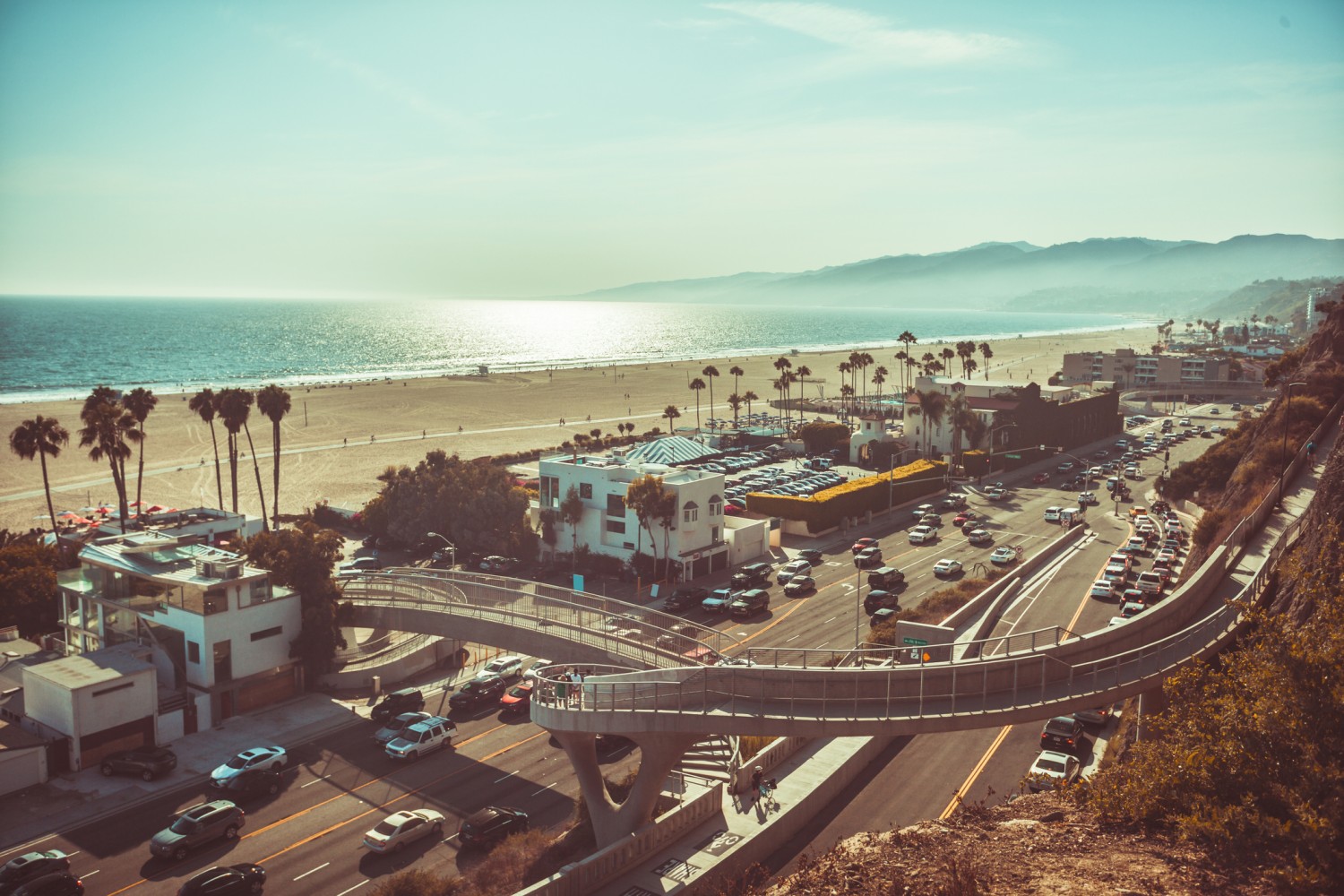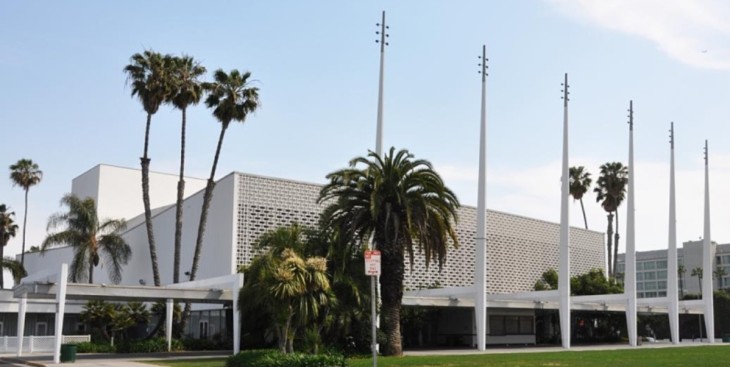
As well described by Paul Krugman, all cities have a core competency: things they do well or better regionally or internationally than other cities. Think Atlanta for logistics, London for finance, and Los Angeles for entertainment. Some cities have several core competencies: think New York for both finance and entertainment. Our City has four significant competencies: beach tourism, retail shopping and services (the 3rd Street Promenade), health (2 major hospitals), and automobiles (Santa Monica Blvd car row).
But over time, competencies change: some increase, some decrease, and some even disappear. For example, in the early sixties, we lost a significant competency, aviation, when Douglas Aircraft moved their factory to Long Beach, and now even the diminished airport may vanish by 2028. Looking ahead, we see substantial challenges to our existing core competencies. During the 77-year life of our youngest citizens, they will see the vanishing of our beach due to sea level rise. By 2100, we will probably lose the entire “Gold Coast” along PCH, the tourism core west of Appian Way, and everything west of OceanWay/Barnard Way. The Mc Clure Tunnel will be flooded, while the Pier could probably be saved by timely jacking it up on new caissons. With our wide sand and parking lots gone, our beach will look like the seascape just south of where Sunset Blvd meets PCH. There is surfing there, but not enough beach to support our full-fledged beach tourism. 2100 sounds like a long distance away until you consider that a tsunami can do in 5 minutes what sea level rise can do in 5 decades. Considering the decades it will take us to tool up a replacement competency equivalent to the beach’s attraction, it’s clear that time is not on our side.
Likewise our next competency loss is already here with the collapse of the 3rd Street Promenade winged by Amazon’s dominance, Covid’s office diaspora, and cinema’s long fade. Of course, it did not help that we grew another unintended competence over the last few decades when we became the premier home of people without housing. Fortunately, Our health competence seems stable in the next quarter century with the presence of many residents and regional boomers (seniors use a lot of health services in the last quarter of their lives). Finally, the automobile sector (sales, parts, gas stations, repairs, parking, driving schools, smog checks etc., etc.) will start to shrink for all the known reasons. Electric cars are much cheaper to operate but have an increasingly steep initial price that will reduce sales. More people will abandon private cars because of parking difficulties caused by our new zoning code that eliminated parking requirements and with the advent of self-driving and shared options (Zip Car, Uber, etc.). Finally, rising micro-mobility (electric bikes, golf carts, scooters, etc.) will also reduce car demand further.
In short, of our four major competencies, one is strong (health), two are staggering (beach and cars), and one is dead (retail), so we need new competencies to propel our City for the rest of this century. S.M.a.r.t would like to propose four new competencies for your consideration.
- PARK PARADISE
Santa Monica’s beaches have always been the lungs of LA, providing escape, particularly on the weekends, from the heat and crowding of the Westside and the San Fernando Valley, With the loss of the beach, we will need to find a substitute and a regional park where the airport is might be a reasonable replacement If we are willing to give up the $350M annually that SMO generates for the local economy. But our City is also completely under-supplied with green open space for its own residents. So instead of having a large airport park in a distant corner of the City or far away up in the Santa Monica Mountains, which is only accessible by car, a chain of smaller 3/4 acre parks could be scattered within 1/4 mile of every resident. Those parks could be paid for by selling off about 20% (45 acres) of the airport to fund these 30 new approximately 150’x200’ pocket parks. As a comparison, those 45 acres, if developed to the density of Gelson’s project, could provide about 5200 units. However, we are focused here on the measurable health benefits for all age groups that parks provide. Also, all these new parks would ideally be linked by bike paths to be fully accessible to all age groups. Those pocket parks would have a variable mix of the full spectrum of active uses (pickle ball, basketball, volleyball, frisbee) and passive uses (picnic, barbecue, playground, dog parks, vegetable gardens, and water features, which will be vital with global warming). The demand for pocket parks will increase exponentially as Sacramento’s new zoning laws eliminate backyards, and more of our residents are crammed into econobox apartments without functional open space. Of course, we know that our dense downtown is woefully under-parked, so one of the biggest pocket parks should go to the City-owned parcel at 5th and Arizona. By distributing to the entire City the benefits of the proposed airport park (which is being added to the existing Clover Park), there will be much more resident buy-in regarding our share of the enormous costs of the regional park we would otherwise be building for Mar Vista’s benefit. Naturally, the State, the County, and LA City would need to fund the bulk of the billions needed for an airport park if the airport closes. At this time, the City has no funds for airport park development, so selling its land is the only immediate funding source. Finally, because it takes years to grow trees, the success of distributed pocket parks would be enhanced by establishing a private tree ordinance to preserve existing trees which would be already in place to shade the future pocket parks.
2. WELLNESS MECCA
The City already has a strong medical establishment (2 Hospitals, Amgen, Emperor’s College, John Wayne Cancer Institute etc., etc.) but could further expand its health infrastructure, e.g., laboratories, clinics, and doctor’s offices, to meet increasing demand as the Westside densifies. The City could also shift from crisis-oriented medicine to a City emphasizing healthy living. Yoga, tai chi, meditation classes, and countless other activities of direct benefit to its residents could be facilitated in our college, educational evening spaces, rec centers, and private spaces. Likewise, pollution reduction is another wellness fulcrum. Any incentives the City can add to remove plastics, diesel particulates, secondhand smoke, and beach pollution would be part of the City’s wellness mandate. Naturally, the biggest pollution reduction (including noise reduction) would come from the electrification of cars with the attendant charging and battery infrastructure.
3, CITY OF FESTIVALS
As our beaches shrink, our hotels, restaurants, etc could be refocused to serve a series of festivals, conventions, shows, and competitions, anchored on our three expo line stops: Bergamot Station would be the art show node, Memorial Park, the athletic node, and Downtown the performing art node with Barnum Hall, the Greek theater, the revitalized Civic auditorium, the Broad Theater, the future Gehry museum, and the 3rd Street cinemas. Soccer tournaments could happen when the three new airport playing fields are built, as they are already designed but not yet funded. All these festivals and conventions would replace the impact of gradual beach loss. Every city, big and small, has a signature annual event celebrating something unique about that City. We have a unique location at the end of a freeway and a light rail line and just 20 minutes from LAX with abundant hotels to have one big event such as AFI every month plus smaller events, e.g., a marathon every other week. The kind of event, festival, show, or convention is only limited by our imagination and our ability to solve the homeless crisis, which scares away tourists and residents. We could be the entertainment destination for all of LA.
4. LA’s BEDROOM
Alternatively, we could also become just a bedroom community for LA like Simi Valley or Palmdale, only closer. The difference from those suburban cities is that they have room for families, while Santa Monica’s development has consistently destroyed family housing. For profit reasons, we have let developers build 3 one bedroom apartments when they should be building one three-bedroom apartment in the equivalent space. For example, the proposed 521-unit Gelson’s Project does not have a single 3-bedroom apartment. This relentlessly increasing lack of 2 and 3-bedroom apartments drives families out of our City, which has collapsed our School District attendance (not to mention the upcoming divorce with Malibu). Our current path favors a high turnover gig worker tenant that has to leave if they want a home business, get married, have children, or want a multigenerational family. Because the State requires us to build 6000 affordable units in the next eight years but does not fund any of those units, the only way to build that number of units is to place a small percentage (10%) of affordable units in every market-rate project. Consequently, 50,000-60,000 units would be needed to reach the 6000 affordable unit target. This is a future that would probably make Santa Monica one of the densest cities, if not the densest City in California. Our population would double with the attendant gridlock, loss of open space, sunlight, quality of life, and the complete surrender of all our resilience and sustainability goals.
We are now transitioning from our City’s core competencies (beach tourism, retail, health, and cars) of the last seven decades to the competencies for our next seven decades. The possible competencies suggested here are to expand our thinking and identify both opportunities and conflicts. Because preparing new competencies on an urban scale takes time, we should start that discussion now and then preposition the elements needed for their realization.
By Mario Fonda-Bonardi for S.M.a.r.t Santa Monica Architects for a Responsible Tomorrow
Thane Roberts, Architect, Robert H. Taylor AIA, Architect, Dan Jansenson, Architect & Building and Fire-Life Safety Commission, Samuel Tolkin Architect & Planning Commissioner, Mario Fonda-Bonardi AIA Michael Jolly, AIR-CRE.
For previous articles, see www.santamonicaarch.wordpress.com/writing


























